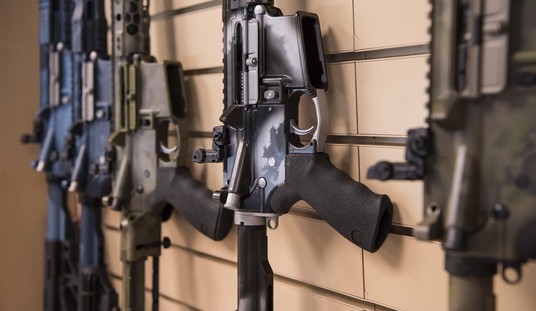In the famous Omaha Beach landing scene from Saving Private Ryan, there is a moment where Captain John Miller (Tom Hanks) crawls out of the water and takes what cover he can behind an anti-tank obstacle (called a hedgehog). He experiences a moment where time seems to slow down and the sounds of battle subside for him. He goes completely deaf, only for his senses to return to normal several minutes later.

Perceptual narrowing in moments of high stress is a heavily documented and relatively well-understood phenomena, from the apparent slowing down of time, to tunnel vision, to tunnelled hearing, better known as auditory exclusion. It affects military forces in combat, police officers in intense situations, and firefighters.
You’re likely to hear a lot more about auditory exclusion in the news, now that the attorney for Tulsa Police Officer Betty Shelby says that she was so hyperfocused on the actions of a non-compliant suspected PCP abuser that she didn’t know backup officers had arrived when she fired on PCP intoxication Terence Crutcher as he appeared to reach into his SUV after ignoring repeated orders by Shelby to get on the ground.
A lawyer for a white Oklahoma police officer charged in an unarmed black man’s death said she was so hyper-focused on the situation that she didn’t hear other officers arrive on the scene or even the deadly gunshot she fired.
Tulsa officer Betty Shelby, who is expected to plead not guilty to first-degree manslaughter at her arraignment on Friday, experienced what is commonly called “auditory exclusion,” a condition in which people in high-stress situations often don’t hear sounds around them, attorney Scott Wood said.
“She didn’t hear the gunshot, didn’t hear the sirens coming up behind her just prior to the shot,” Wood said Thursday. “And it’s not only a common phenomenon described in literature, but it’s the No. 1 perceptual distortion by people I have represented who have been involved in shootings – diminished sound or complete auditory exclusion.”
He said that while Shelby’s defense won’t hinge on whether she was aware of other officers when she shot 40-year-old Terence Crutcher on Sept. 16, it would be important for jurors to know.
“It’s just one of the many facts that have happened, and I don’t think our defense turns on whether or not she knew they were there,” Wood said.
Auditory exclusion is commonly reported by officers who fire their weapons, said David Klinger, a professor of criminology and criminal justice at the University of Missouri-St. Louis.
Klinger, a former Los Angeles police officer who fatally shot a suspect just four months into the job, interviewed 80 law enforcement officers involved in 113 separate cases where they shot citizens. Diminished sound was officers’ most commonly experienced perceptual distortion, reported in 82 percent of the cases either before or after the shooting, or in some cases both, his study shows.
“Other researchers have documented the phenomenon of muted sound or full auditory exclusion where you don’t hear anything in a variety of circumstances outside of policing,” Klinger said.
Other distortions include tunnel vision and altered perception of time, in which situations are experienced in slow motion.
Wood is stating that due to auditory exclusion, Officer Shelby was unaware that Officer Tyler Turnbough had arrived with a taser to provide backup and was standing behind her and to her left.
She was similarly unaware of the other officers who were rushing up to the scene, to arrive seconds after she fired.
She thought she was completely alone, with a suspect who refused to listen to her commands.

When Officer Shelby saw that Terence Crutcher had dropped his hands and was leaning forward and to the left as if reaching into the vehicle (whether or not he actually did is legally irrelevant), she focused on her front sight and pressed off a shot (at the moment above).
Nine seconds later, after two more officers ran up, Crutcher fell, bleeding profusely from the single mortal wound. Officers then helped Shelby away from the rear of Crutcher’s vehicle, still apparently in this intensely focused state, and began processing the scene.
Prosecutor Steve Kunzweiler filed charges against Officer Shelby before the police investigation into her shooting of Terence Crutcher was complete, apparently under intense political pressure including Black Lives Matter agitators outside the Tulsa Police Department threatening to incite racial conflict.
Crutcher’s death was a result of his apparent unwillingness or inability (if intoxicated on PCP, as he had been in the past) to follow instructions from Officer Shelby. When he returned to his vehicle and made a motion construed as an attempt to reach into the vehicle, Officer Shelby had to discharge her weapon.
The following video vividly drives that point home.
It was the only reasonable response to make under the circumstances created by the actions of a non-complaint Terence Crutcher.
We’re not saying he was a bad person, but he made bad decisions that forced an officer to respond to her training.
In rushing to file charges without a completed investigation or a toxicology screen, I believe that Tulsa County District Attorney rushed to pander to the demands for “social justice” over the interests of real justice, as North Carolina prosecutor Mike Nifong did in prosecuting a case against Duke University lacrosse players unfairly accused of a rape that simply didn’t happen.
Officer Shelby is pleading not guilty in a court in Tulsa today.
Soon enough she’ll have the opportunity to make her case in front of a jury.








Join the conversation as a VIP Member